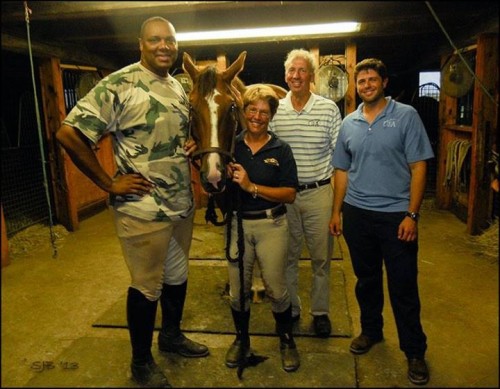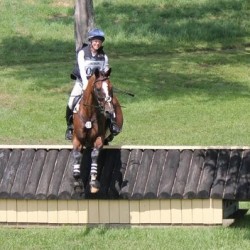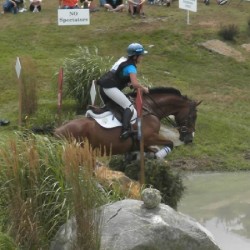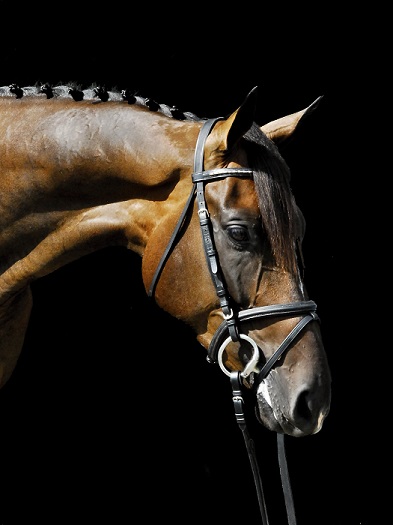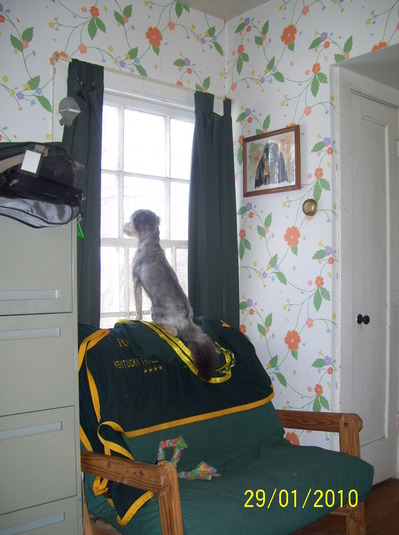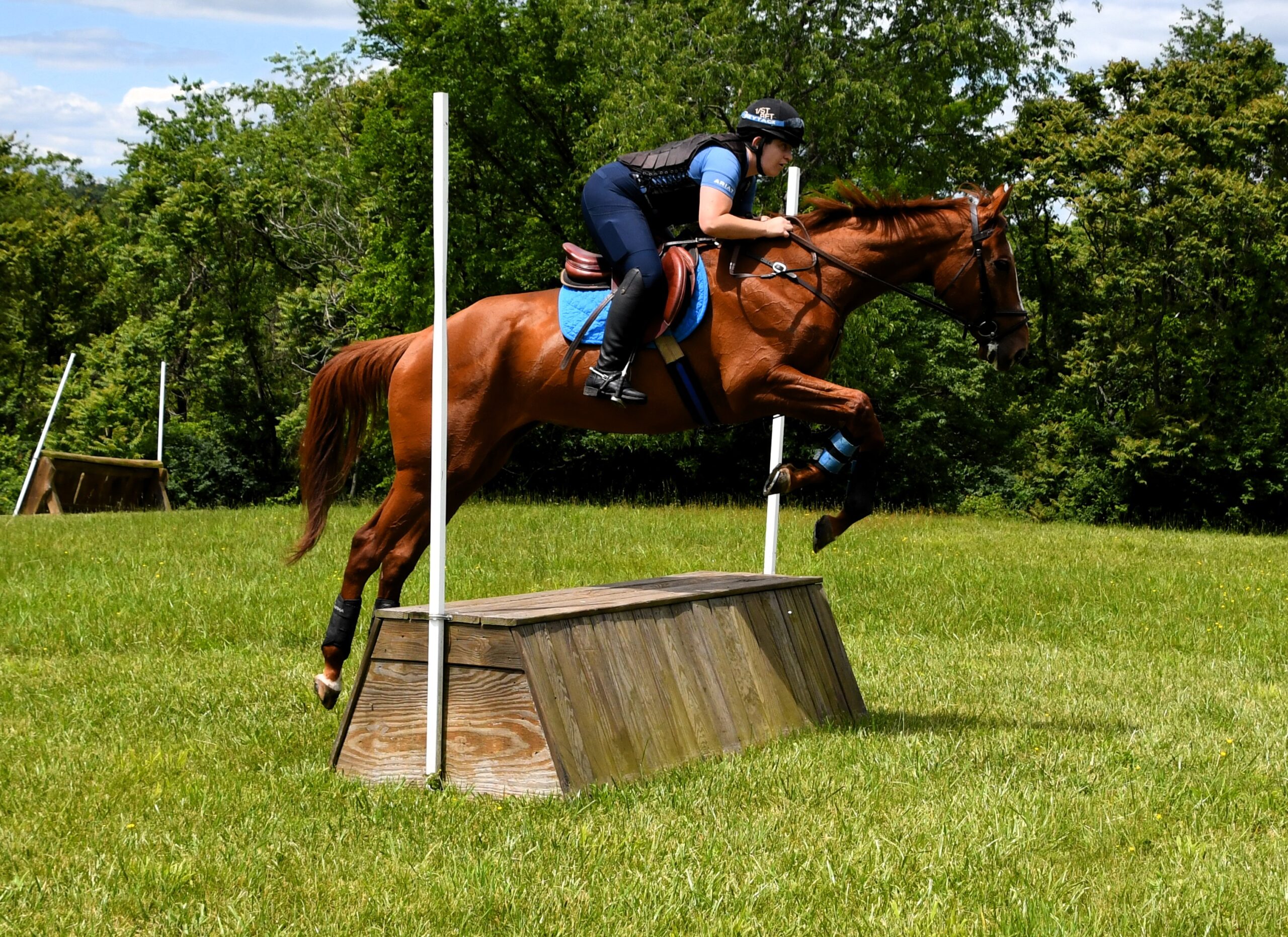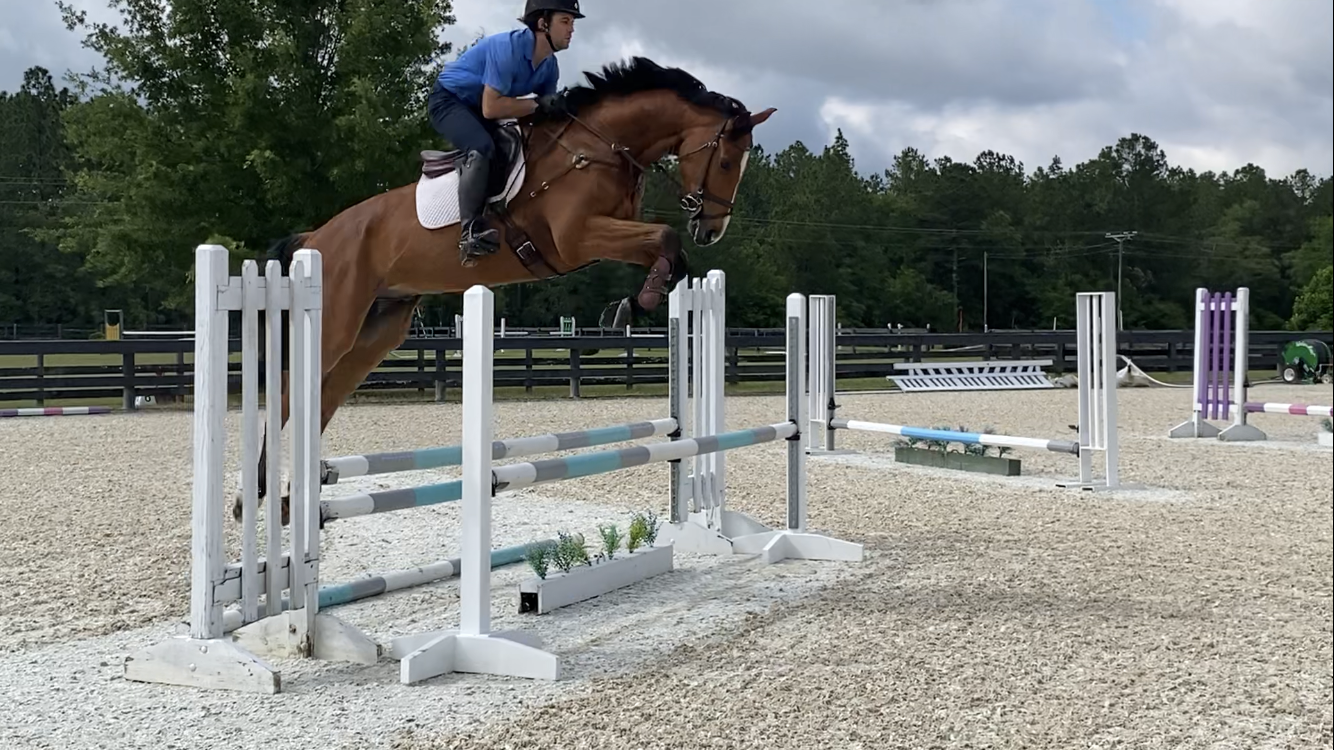Lauren Nethery is back with some more selection advice…

From Lauren:
After many years, long hours, and late nights of intense, meticulous, hands-on research, I have developed a theory that will most certainly bring about at least 5 of my allotted 15 minutes of fame…and revolutionize the equestrian dating world. The secret to a successful courtship for every equestrian far and wide, male and female, young and old, is this:
SELECT YOUR MATE LIKE YOUR SELECT YOUR OTTB
Admittedly, there aren’t CANTER websites to peruse (next million-dollar idea: Communication Alliance to Network Turned-On Event Riders?) and equestriansingles.com is a joke. No, there are no Coggins or Health Certs available to inspect before admitting onto “show grounds”. BUT, add the following items to you list “do’s” and don’ts and you will end up with a capable partner that is sound, sane, attractive, and athletic (in theory).
1. ONLY SEARCH FOR PROSPECTS FROM REPUTABLE SOURCES AND LOCATIONS
If you’re hunting at bottom-level “claiming tracks” (ie seedy bars and truck stops near show venues), expect to have to deal with the sorts of problems that accompany long campaigns with mediocre riders and trainers. Prospects found at such locations almost always have soundness issues (so you lost those teeth in which bar fight?), stable vices (no, I don’t have a cigarette you can bum), and behavioral problems (you have how many warrants out for your arrest?). Instead, stick to prospect-hunting at legitimate establishments that offer high-dollar mounts for inspection. Think polo matches, A circuit shows, and FEI events.
2. DO JUDGE A BOOK BY ITS COVER
If it looks like a rat, it probably is a rat. Don’t get sucked into the “oooooh goodness, with a little elbow grease, some mane-pulling, and a few groceries, I bet this one would look sooooo much better”. There are lots of ponies in the paddock. Remember that it is imperative to start with something that can be resold if they are destined for a different purpose that you are seeking and you won’t get stuck with an old plow horse taking up space and eating you out of house and home.
3. BRING ACCOMPLICES FOR ADDITIONAL OPINIONS
Especially if you are in danger of being blinding by lust at first sight (I know you’ve always wanted a 17h one with blonde hair and blue eyes, we all have), there is safety in numbers. Pick one or two of your most discerning friends to accompany on all prospect-searching endeavors.
4. THINK OUTSIDE THE BOX
Take a minute to think about the best performers in all of the FEI disciplines. They come in all shapes and sizes and from many diverse backgrounds, training programs, and bloodlines. If you are dead set on a 17h Bay Thoroughbred Gelding to take to Pony Finals, you are going to be disappointed. Strike a delicate balance between high standards (cribbers, hard keepers, and kickers need not apply) and broad horizons (that roached mane will grow out, those shoes can be trashed, and a show coat and ear bonnet will really spruce things up).
5. ASK ABOUT A TAKING THE PROSPECT ON TRIAL
You would be surprised how often a trial is a viable option. The last thing you want as a prospective buyer is to be stuck with a completely unsuitable mount for months or years on end. God forbid it lack curb appeal and be lame. That nag will haunt your barn forever. Instead, play it safe and insist on a trial period of at least one date or ride but preferably a week or month to allow for some time to adjust to each other’s quirks and preferences before jumping into any long-term commitment.
6. THINK ABOUT THE RETRAINING POSSIBILITIES
While many people are often myopic in their approach when it comes to searching for a prospect, don’t be afraid to look beyond your chosen discipline to find your next upper-level mount. Are you an eventer looking for a prospect with a lot of scope and a good gallop that is still tractable and obedient on the flat? Perhaps consider prospects from the dressage or jumper rings that may have untapped abilities just waiting to be unleashed. After all, there are lots of practical applications for piaffe-ing to music and making the time in the jump off. Or, are you an aspiring reiner looking for a stout, level-headed mount that is still sound enough to slide and spin like a pro? Consider those broncs and cutting mounts at rodeos. Just imagine if all of that bucking athleticism or the skills of getting down low in the blink of an eye were put to different uses.
7. SCRUTINIZE BLOODLINES
While breeding alone does not make an elite mount, it certainly helps, especially if you plan on using said mount in your personal breeding program at a later date. If there are full or half siblings to take a look at, make sure to do that as well. Perhaps a strapping young prospect catches your eye in the warm up ring but has a club foot and a parrot mouth. Make small-talk, find out a few important breeding details, and Voila! Just maybe his full brother, a couple of model years older, is available and seems to be the leading stallion prospect of that particular sire-dam cross. Also, if the prospect already has progeny on the ground it is probably best to steer clear and seek out a greener sort with less breeding shed mileage to ensure that you can mold the prospect in the direction of maximum earning potential.
8. MAKE A SHORT LIST AND THEN COMPARE
Once you have a good feel of the most eligible individuals in the herd and have established that two or three hold significant promise as elite mounts, compare them to each other (side by side is most helpful but even from a distance or from pictures will do). Hopefully, all three more or less check all of the boxes on your “do” list and don’t possess too many apparent vices or conformation issues. Further comparison will allow you to weed out the weaker links by picking the best hind end, flashiest mover, and most attractive face from three similar, quality possibilities.
9. VET EXTENSIVELY
Now is the time to cross ALL of your T’s and dot all of your I’s. Just when think that you can begin to hear faint strains of harp music and angelic voices, a thorough vetting can ensure no skeletons exist in your chosen prospect’s stall. Be sure request any medical records that they are willing to release, do a complete toxicology screen for any illicit substances that may be masking potential soundness or behavioral issues, and assess at the walk, trot, and canter for any hint of a limp, bobble, bolt, rear, or spook.
10. MAKE UP YOUR MIND AND TAKE ACTION
Last but not least, do not vacillate forever on the right time to buy. Time and again, I hear sob stories about how the perfect mount was whisked away to a fellow competitor’s barn destined for fame and glory while Sally Sue was still gazing over at the adjacent barn wondering about what horses might be hidden away in those stalls. While I am not advocating rash decision making, just be of wary of dawdling for so long that you’re old and past your riding prime before you even try to schedule a pre-purchase.
Good luck and happy hunting!!















